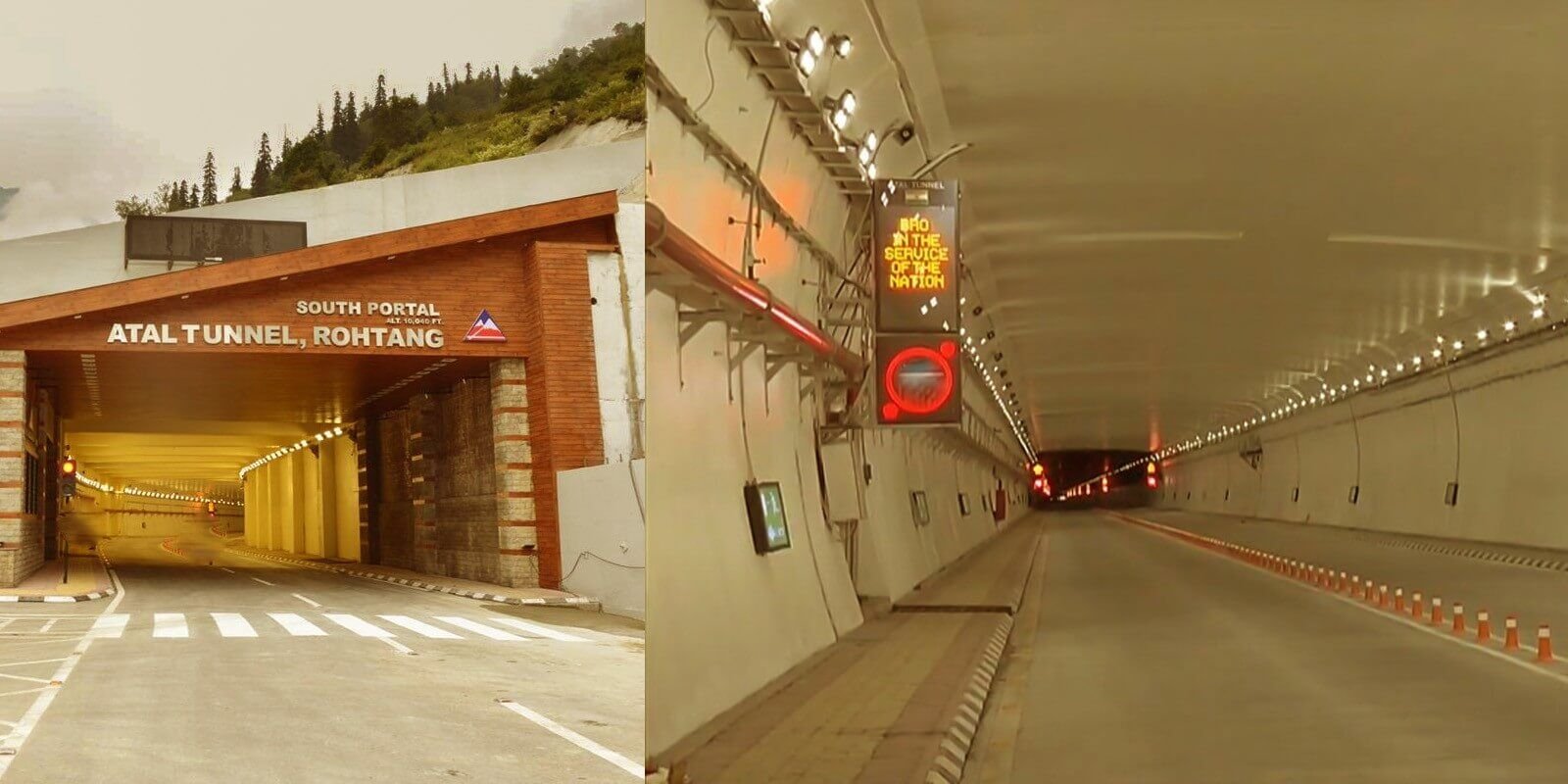Discover the 10 must-know facts about Atal Tunnel, the world’s longest underground highway. Explore its incredible engineering feat and groundbreaking features.
The construction of the Atal Tunnel connecting Manali with Leh, which is the world’s longest highway tunnel above 10,000 feet, has been completed in 10 years. The horseshoe shaped single-tube, double-lane tunnel has many firsts. It is also the country’s first tunnel to have an escape tunnel within the main tunnel because of the topography. This is also the first tunnel to deploy the Rowa flyer technology, which allows engineers to work at inverted levels.

Here are 10 interesting things to know about the Atal Tunnel – world’s longest highway tunnel connecting Manali with Leh
1.
The 9-km Atal Tunnel is constructed at an estimated cost of ₹ 3,200 crore.
2.
Atal Tunnel in Lahaul Spiti’s Rohtang will shorten the distance between Manali and Leh by 46 kms and drive time by around seven hours.
3.
Prime Minister Narendra Modi inaugurated it on 3 October 2020.
4.
The tunnel will provide all-weather connectivity to remote border areas of Himachal Pradesh and Ladakh, which otherwise remain cut off from the rest of the country for about six months during winters.
5.
Atal Tunnel will be not only important from the strategic point of view but also give a boost to tourism in Lahaul-Spiti, creating employment opportunities.
6.
Challenge: The most challenging task was to continue the excavation during heavy snowfall in winter. Excavation for tunnelling was done from both ends. However, as Rohtang pass closes during the winter, the north portal was not accessible during winter and the excavation was being done only from the south portal in winters. Only about one-fourth of the entire tunnel was excavated from the north end and three-fourths was excavated from the south end.
7.
The tunnel was built using the New Austrian tunnelling method and has been equipped with a semi-transverse ventilation system, where large fans separately circulate air throughout the tunnel.
8.
The tunnel provides a telephone facility on every 150 metres, fire hydrant on every 60 metres, emergency exit on every 500 metres, turning cavern on every 2.2 km, air quality monitoring on every one km, broadcasting system and automatic incident detection system with CCTV cameras on every 250 metres.
9.
The tunnel has consumed 14,508 metric tonnes of steel and 2,37,596 metric tonnes of cement, and excavated out 14 lakh cubic metres soil and rocks, using the drill and blast technique for excavation and the New Austrian Tunnelling method for construction.
10.
They took the decision to construct the strategic tunnel below the Rohtang Pass on June 3, 2000, when Vajpayee was the Prime Minister.


